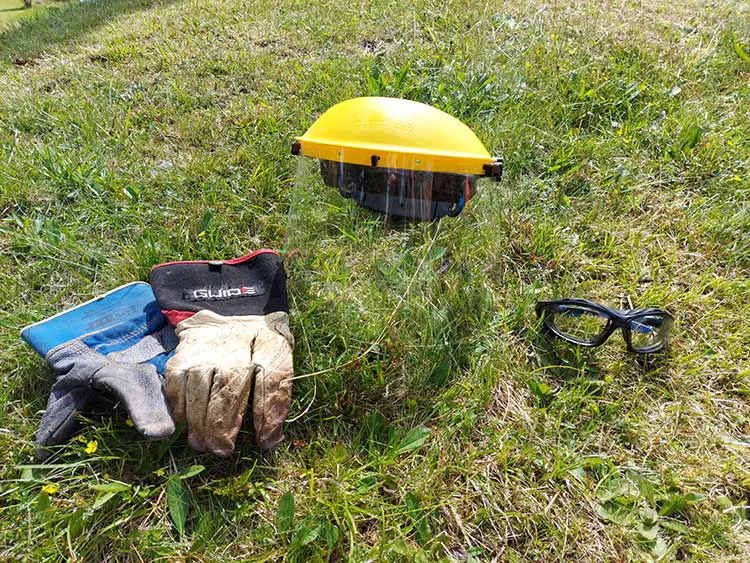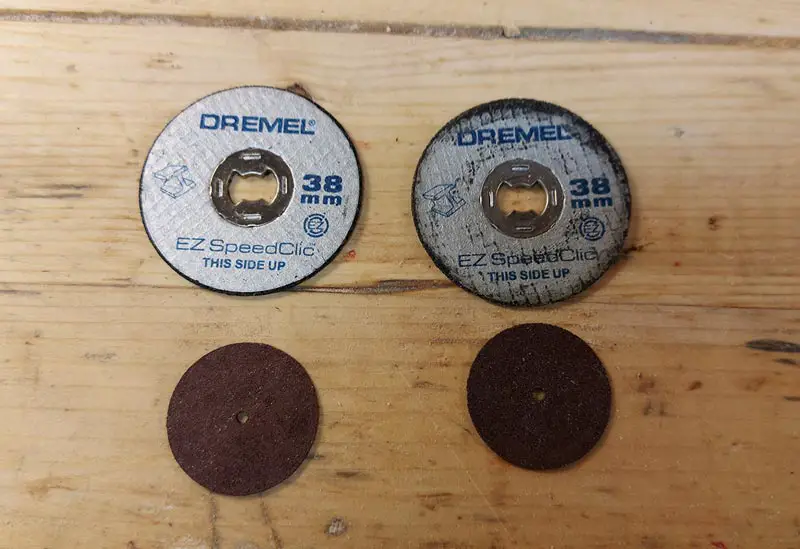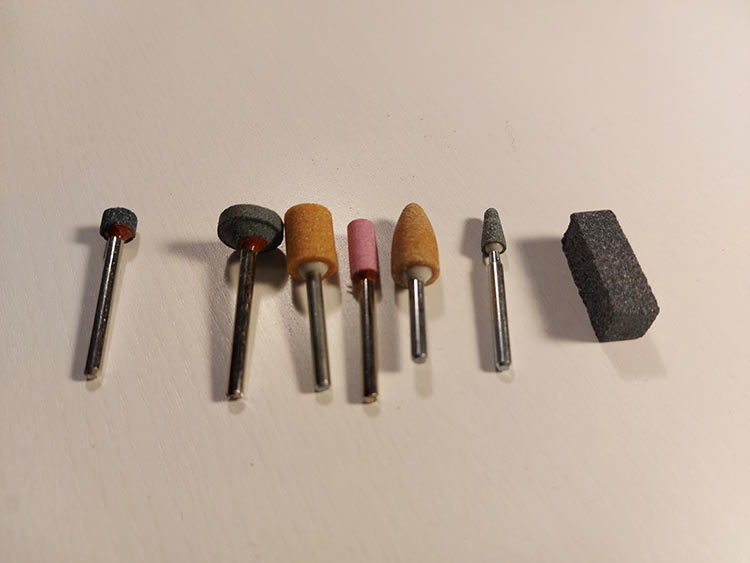Disclosure: This post may contain affiliate links, meaning I get a commission if you decide to make a purchase through my links, at no extra cost to you.
Cutting metal can be daunting at first. Sparks will be flying, cutting is fairly slow compared to wood and it can feel like the cutting wheel is about to break at any moment. A Dremel might seem a little small and powerless for doing cuts in metal. But I can assure you that the Dremel does come in handy sometimes exactly for this job.
A Dremel can cut most types of metal. It uses 38mm cutting discs or smaller to make detailed cuts in metal. The Dremel is best used for cutting small pieces of metal, like screws, small pipes, and is also useful for getting into cramped spaces when cutting. The Dremel will have a hard time cutting thick pieces of metal or hardened steel.
A Dremel can cut metal. But it is a bit tricky to trust the power and stability of the Dremel at the start. Like I said before, the cutting wheels are sometimes so thin that it feels like they can shatter at any moment. So let’s get into it and start cutting some metal.
How to Cut Metal With A Dremel
To cut metal with a Dremel you have to put on safety gear. When the safety gear is on you can secure your metal piece in a vice. Now insert the cutting bit into the Dremel, set the rpm from 25 000 to 35 000, and turn the power on. Slowly move the cutting disc onto the metal piece and carefully apply some pressure.
When cutting metal with a Dremel, there will be sparks that come flying in many directions (Aluminum does not create sparks when being cut). These sparks are small pieces of metal that are being burnt up by the friction from the cutting. The spark is mostly harmless but you should wear safety goggles/visor, full sleeve shirts, pants, and optionally when cutting metal with the Dremel.
It is also best to do the cutting in a well-ventilated area where there are no potentially flammable materials. For example, don’t do the cutting right beside your gasoline tank.
Safety Gear Needed for Cutting Metal With A Dremel

1. Safety Goggles or Safety Visor
Safety goggles are a must-have when cutting metal with a Dremel. Cutting discs can break and metal pieces can come flying at your face. Your eyes are one of the most fragile parts of your body. Optimally you should use a Safety Visor, this is in my opinion better than goggles since they can cover your whole face and even neck when cutting.
2. Gloves
In general, gloves and power tools do not match that well, because the gloves can get caught up in the moving parts of the tool and become a security risk. But when cutting metal with a Dremel, I personally choose to use gloves to protect my hands from sparks and hot metal. Decide what works for you.
A tool like a Dremel might still be able to do some harm if your glove gets caught up in the cutting bit. But it’s not nearly as powerful as something like an angle grinder for example.
3. Hearing Protectors
The Dremel produces a great deal of sound. So it is a good practice to always use Hearing protectors. If you want to use earmuffs or earbuds is up to you. As long as you protect those precious ears of yours.
4. Covering Bottom And Top
It is a good idea to wear a long-sleeved sweater or shirt and pants when cutting metal. Sparks are flying in all directions and some of them can actually burn your skin if they hit you. Most of the sparks are harmless and they will burn out before they can hurt you. But some will hurt a little bit.
5. Steel Toe Shoes
Steel Toe Shoes are general safety gear whenever working with power tools and metal. Now, the chances are fairly low of you actually letting go of the Dremel and it hitting your shoes when cutting but as a good rule, we should always use Steel Toe Shoes when cutting metal with a Dremel.
How To Cut Metal With A Dremel: Step By Step Guide
1. Put On Safety Gear
Put on safety Goggles/visor, Cut-resistant gloves, Hearing protection, Clothes that cover, and steel toes shoes.
2. Secure Metal Piece in A Vice
It does not have to be a vice. But just secure your metal piece so it will not move while cutting. A lot of accidents happen when the metal piece starts moving uncontrollably when cutting.
3. Choose Which Cutting Disc You Want
Choose between the stronger Reinforced Ez-lock cutting disc (SC456) or the more fragile but quicker to cut cutting disc ( 409, 420, 402 ). I prefer using the Reinforced Cutting Bits because they will not break while cutting.
4. Insert The Cutting Bit In The Dremel
When you have attached the cutting disc to its corresponding mandrel you can insert the bit into the Dremel and lock the bit in place.
5. Set The Rpm From 25 000 To 35 000
Cutting metal works best at a high rpm. Get a feel for what you are comfortable with and use that. Anywhere from 25 000 to 35 000 should work fine. A good idea can be to start at 25 000 and work your way up.
6. Turn On The Power
Now you are ready to start cutting. Hold the Dremel securely in one hand while turning on the power of your Dremel.
7. Start Cutting Slowly
When you start cutting metal with a Dremel it can feel a bit strange. It is a lot different than cutting wood for example. Ease the cutting wheel onto the metal piece and apply just a little bit of pressure.
Now the Dremel will start cutting and sparks will fly mostly in the direction of the cut. Cutting is slow compared to cutting wood, just keep on applying some pressure, let the tool do the cutting, keep a steady hand and be patient.
8. Finish The Cut
Use less pressure when the cut is about to go all the way through to avoid the Dremel jumping due to lack of resistance.
9. Turn Off The Dremel
When you are finished cutting turn off the Dremel and remove the plug from the socket.
10. Do Not Touch Metal Or Cutting Disc After Cutting
Cutting metal with a Dremel causes a lot of heat due to friction. Let the metal and cutting disc cool down before touching it after cutting.
Different Cutting Wheels For The Dremel

We have two main categories of cutting discs for cutting metal with a Dremel. The first category uses the EZ-lock system and is reinforced #SC456, the second category is the simpler and more fragile cutting disc’s #409 that use a mandrel #402 instead of the EZ-lock system. I prefer to use the reinforced cutting discs #SC456.
The advantage of using the reinforced cutting discs is that they feel more stable when cutting, they are less prone to breaking, they generally last longer and they can cut bigger pieces of metal. They are also simples to switch out and replace because of the EZ-lock system.
The downside of using the reinforced cutting discs is that they cut slower since they are thicker, they remove more metal when cutting which results in more shards and sparks and they are also more expensive.
The advantages of the smaller cutting discs #409/420 are that they cut quicker, produce fewer sparks, and are cheaper. The biggest downside of using the smaller cutting discs is that they are fragile, they have a tendency to break while cutting if they get some sideways pressure. This can dangerous when parts of the cutting disc can come flying at you at full speed. They cut fairly well, but use them with care.
Grinding after cutting.
After doing a cut it is always a good idea to grind away any metal debris and uneven parts of the cut. Use a grinding stone to make the cut beautiful and smooth. Grinding stones are always included in bit sets and come in all shapes and sizes. They look like this ->

What Dremel Is Best for Cutting Metal?
The best Dremel for cutting metal is the Dremel 4300. It has a powerful 1.8 amp motor which outclasses its predecessor The Dremel 4000 that had a 1.6 amp motor. The powerful motor of the Dremel 4300 makes it easier and more enjoyable to cut metal with.
Check Price: Recommended Dremel For Cutting Metal: Dremel 4300-9/64
How thick of a metal piece can you cut with a Dremel?
The absolute thickest solid metal piece you can cut with a Dremel will be about 1.1-inch (2.8 cm) thick. The largest cutting wheels for Dremel have a radius of 3/4-inches (1.9 cm). But the bit that the disc is secured to limits the cutting radius to about 0.6-inches (1.5cm). So to cut a piece of metal that is 1.1 inches (2.8cm) thick you have to cut it from both sides.
Now, using a Dremel to cut thick pieces of metal is not recommended. The cutting disc will become worn out and smaller while cutting, so you will probably have to change the cutting disc a couple of times when doing a cut like this. Depending on the width of the metal of course. The motor will also work hard when doing these kinds of cuts, so it will cause some wear and tear on the motor.
And last but not least, there are better ways of cutting thick pieces of metal, like using an angle grinder.
Conclusion
A Dremel is a good tool for cutting small pieces of metal. It can really be a helpful tool to do those small cuts, and cuts that are hard to get to. It is a quick and versatile tool. If you are the kind of person that just occasionally works with metal and needs to do a cut here and there, then I recommend going for a Dremel. If you cut metal on a daily basis and want something to make cutting metal easier for you, then I would go for a tool more specialized in cutting metal. A Dremel can be classified as a tool of many trades, but a master at none.
